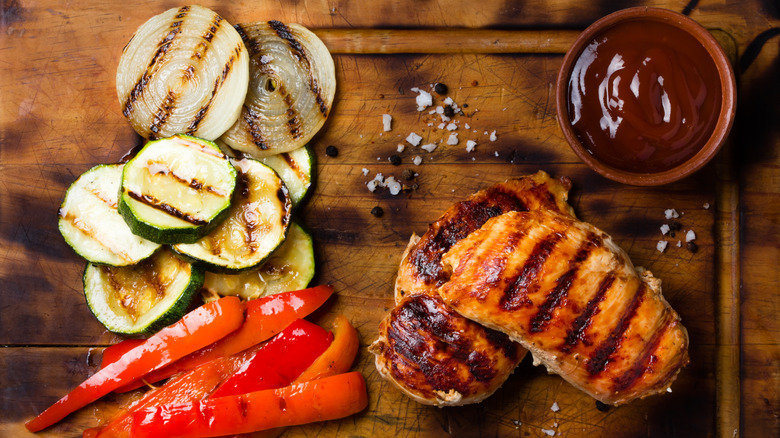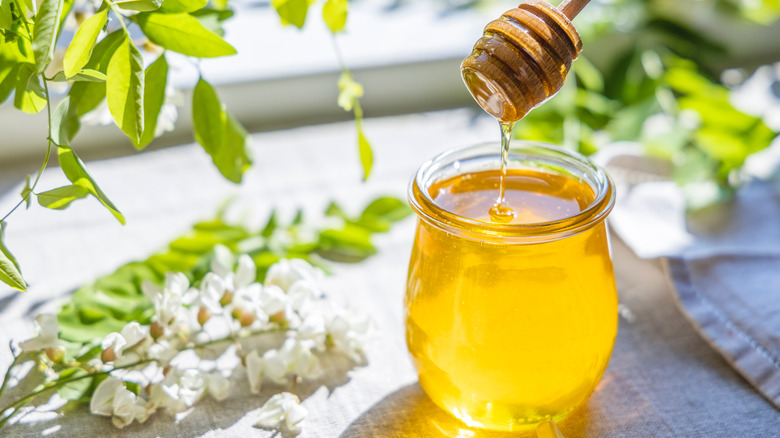The Trick To Getting Photo-Worthy Grill Marks
The saying, "We eat with our eyes," has certainly stood up to the test of time, especially nowadays with Instagram-worthy dishes that rival museum display pieces. And luckily, you can find such beauties everywhere — from Michelin-starred spots with tasting courses to your local mom-and-pop café.
But not everyone can afford to eat out multiple times per week to experience such edible works of art, nor are most people fluent in gastronomy techniques like emulsification, jellification, and spherification, which is where home cooking comes in. And guess what? Such labor of love in any kitchen can match the flavors and aesthetics of restaurant dishes, especially when it comes to grill marks on proteins, vegetables, and fruits.
While grill marks may be more for aesthetic purposes than flavorful ones, as noted by Mel Magazine, it's fun to replicate those cross-hatched marks that rival just about any upscale restaurant in town. Here's how to get those photo-worthy grill marks on a variety of foods.
Grab some honey
Who knew that something so sweet can enhance something so savory? According to Taste of Home, marinades or sauces with honey will help to make grill marks more pronounced on the grill or over the stovetop.
Thermo Pro expands on honey's superpowers, emphasizing that honey caramelizes beautifully, adding a "sticky sweetness" for heightened flavors, crispiness, and charred colors. For reference, caramelization is responsible for those nutty, caramel notes in foods, and happens when sugars disintegrate at high temperatures (excess moisture is eliminated as well), via Science of Cooking.
Sioux Honey notes that honey has a hygroscopic nature, which means that it locks in moisture from other ingredients in a marinade or brine via absorption or adsorption, per Science Daily. In other words, honey makes foods taste juicy and moist.
But be sure to watch the heat levels on the grill or stove. As Thermo Pro mentions, low heat won't make the honey caramelize, while very high heat will make the honey burn. This is especially important when cooking steaks, as many steak recipes will state that the heat levels should be scorching hot.
So whether you're cooking up some chicken breasts or some grilled peaches, be sure to add a little touch of honey to the mix for sweetened flavors, a crispy exterior, and photo-worthy grill marks.

